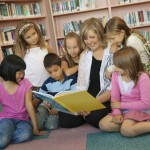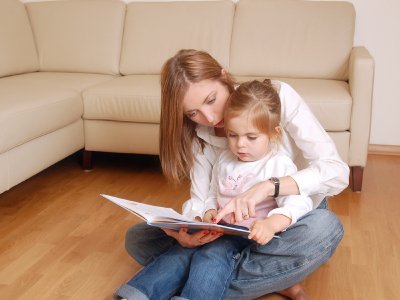It is important for adults to know and understand that learning to read is the single most important skill that a child should master. While reading is not a complicated task, it may be quite challenging in the earliest stages of development. By learning to read, the road that leads to success in school, social situations, and life is paved. The child that knows and completely understands how to read is a child that is self-confident and motivated in all areas of academics and life itself. Whether you are a parent or guardian of a child, or you work directly with children in a professional setting, it is essential that you understand the basics of learning to read.
Why Do We Read?
There are many different reasons associated with why we read. Many simply read to acquire new types and levels of knowledge. There are many that read simply because they enjoy reading. There are some that read to perform various jobs within a professional setting. Many will read on topics that will assist them in obtaining information and skills that are required to enhance their decision making skills and make important choices throughout life. Most people will encounter reading materials that will instruct them on how to perform certain tasks such as cooking, assembling products, installing products, and even acquiring directions in order to travel from one location to another. Reading is participated in to learn about the world around us, as well as to keep contact with those that we are close to.
How do you teach a child to read?
As a parent, guardian, or a professional that works directly with children, it is important to know that there are many different ways to help a child that is new to reading. By assisting the new reader, you are opening up many new worlds, adventures, and experiences for a child. One of the best ways to encourage children to read
is to read aloud to them. By showing an interest in books, getting excited over the stories and events that take place in those books, and sharing the pure joy associated with reading those books, a child will take notice and will eventually want to get in on all the excitement. Eventually, a child will come to a point, after a little practice and repetition, in which they will be able to delve into the many worlds, adventures, and experiences all on their own!
When a child is learning to read, it is important to explain to them that by doing so, they will be able to easily gather information pertaining to the people, plants, animals, places, and situations that occur in the world around them. It is important to inform them that the amount of knowledge that they may obtain through books is virtually endless. Children love to gain their own share of independence. When teaching them to read, it is important to be certain that you inform them that once they know how to read on their own, they may learn about anything and everything that they have an avid interest in. Many kids find this very exciting.
When a child is learning to read, there are certain concepts that they should gain an understanding of. One of the main concepts is that each story has a beginning as well as an ending. They should understand that most stories involve a problem that needs to be solved. It is also important that they understand that the people and animals in the stories that they read are called “characters”. It is important to cover the concept of “theme” when a child is learning to read. They should be encouraged to observe the pictures, ask questions, and answer questions pertaining to the situations, characters, events, and conflicts within the story. By making sure all of these concepts are addressed, a child not only learns to read, but they also learn how to be observant, inquisitive, and comprehend the material that they are dealing with.
Many parents, guardians, and those that work with children make the mistake of believing that reading is all about memorizing. Yes, repetition and memorization do play a role in the art of learning to read, but in all actuality, it is a very small role. Reading is more than just memorizing sight words. It is about learning to hear sounds and observe them in action. It is about listening to complex mixtures of letters. It is about taking letters that stand alone as certain sounds and uniquely blending them in order to create a beautiful sounding word that has meaning. Language – a unique collaboration of characters, sounds, patterns, and words – is complex within itself, but necessary in order to communicate effectively. Learning to read is about gaining an appreciation of all the components that make up a language.
When assisting a new reader, it is important to talk to them as much as possible. The knowledge of the oral aspects of languages is a core component for success when it comes to reading. It is important to avoid simply reading stories to the child all the time. You should tell them stories as well – about yourself, situations that you and others have experienced, and even about those areas in which you possess a lot of knowledge. Be certain to ask the new reader a lot of questions and encourage them to do the same. Engage in fun activities too! These may include singing, sharing rhymes, and even sharing riddles with them.
It is also important to make learning to read a daily activity. Adults should take an avid interest in spending quality time with the child that is new to reading. Sharing stories, reading together, and simply sharing the value of reading with a child will motivate them and allow them to develop the self-confidence that they require to be successful readers. It is important to know and understand completely that reading is more than a basic skill. It is a core component for success. It is essential for communication. It is a gift. By following the tips listed throughout this guide, you will be successful when it comes to assisting a child that is learning to read.











Add Comment